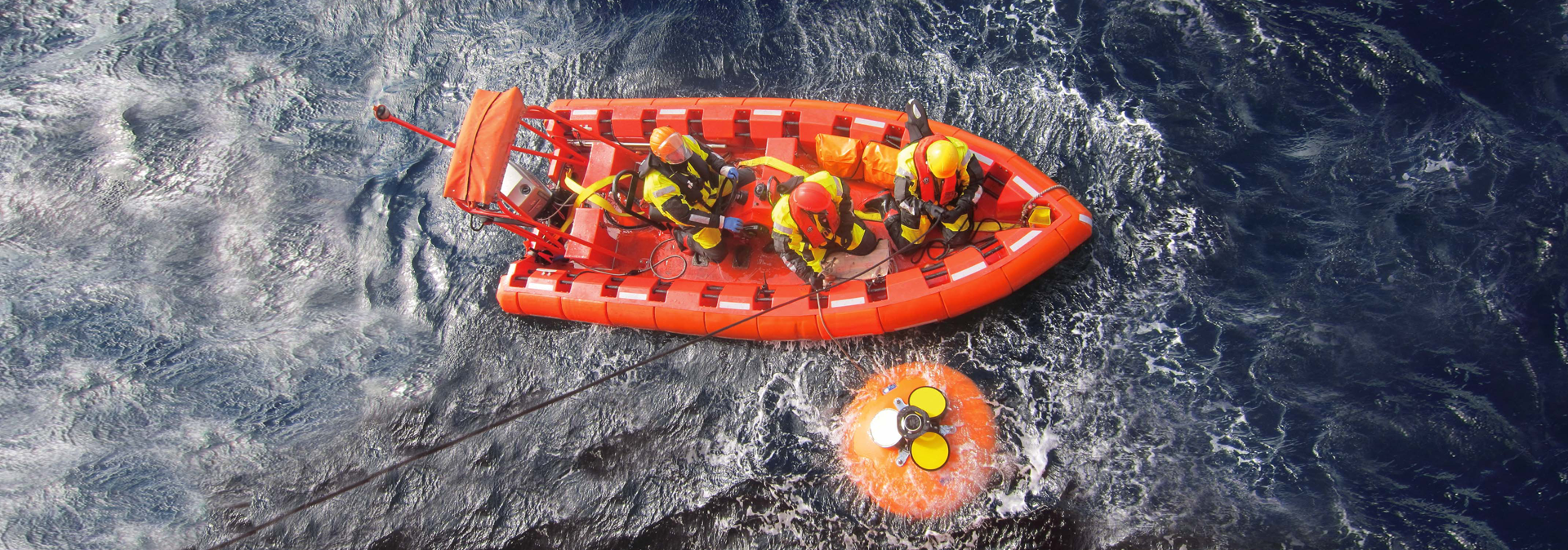Our Technology
Nortek designs, develops and produces sensors which apply the Doppler effect to measure water in motion.

The Doppler effect occurs when a sound signal increases or decreases in frequency because the source and receiver of the sound signal move closer to, or farther away from, each other.
The apparent change in frequency of the sound, or the “Doppler shift”, is directly correlated to the speed at which the source and receiver are moving relative to one another; if the source is moving past the receiver very quickly, the change in frequency will appear greater than if it was moving slowly.
Our Acoustic Doppler Current Profilers, or ADCPs, rely on this phenomenon to operate. They begin by sending a pulse of sound at a known frequency into the water.
Ceramic plates on the instrument vibrate to produce the sound. As that sound travels away from the instrument, it will encounter particles moving passively in the water column, such as sand, plankton or other sediments. These particles reflect an “echo” back to the ADCP.
Because these particles are moving relative to the instrument, the reflected sound signal is Doppler shifted: it returns to the ADCP at a slightly different frequency.
The ADCP detects this change in frequency and uses that information to calculate the velocity of the passively moving particles, and therefore the velocity of the water flow, which we know as currents.
Our Doppler Velocity Logs, or DVLs, use the same principles as ADCPs, but instead measure the speed of a subsea vehicle relative to the seafloor.
The DVL is typically on a vehicle such as an AUV (Autonomous Underwater Vehicle) or ROV (Remotely Operated Vehicle) and sends sound signals down toward the seabed.
The DVL is not usually looking for reflections from passive particles in the water column, but rather a reflection of the sound bouncing off the seabed. Because GPS and other traditional navigation systems can’t function underwater, velocity information from DVLs is essential for reliable navigation of subsea vehicles.
Explore applications where our technology is used
Marine science and research
Oceanographers, marine scientists and government researchers require innovative oceanographic equipment that gives them data they can trust.
Marine operations
Our instruments contribute to the safe and efficient maintenance and operations of offshore infrastructure, including monitoring and site selection.
Renewable energy
The successful transition to green energy requires safe and reliable implementation of offshore wind and tidal turbines.
Marine autonomy
DVLs provide crucial information to ROV operators and enable subsea and surface vehicles in GPS-denied environments to navigate reliably underwater.
Coastal engineering
Comprehensive knowledge of the sea state near coastal communities informs coastal protection measures and safe coastal operations.
Marine resources
Informed management of fisheries, ocean ecosystems, kelp farms and more contributes to sustainable human development.